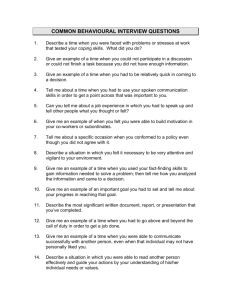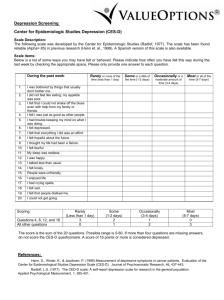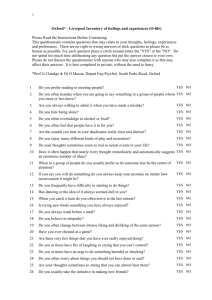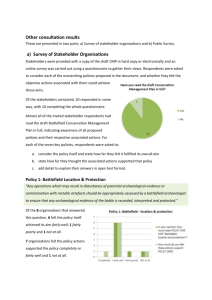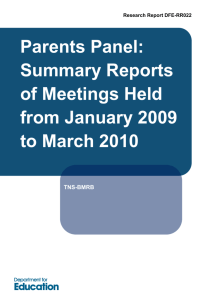Talking Down Is Not Enough - Surcon International, Inc.
advertisement
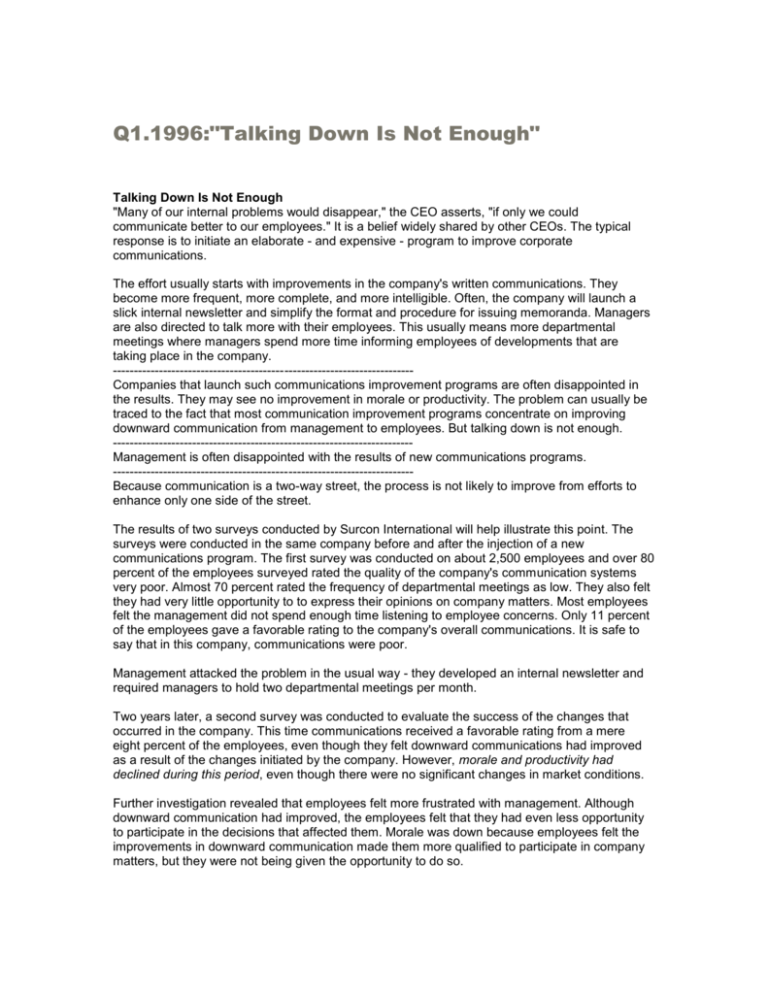
Q1.1996:"Talking Down Is Not Enough" Talking Down Is Not Enough "Many of our internal problems would disappear," the CEO asserts, "if only we could communicate better to our employees." It is a belief widely shared by other CEOs. The typical response is to initiate an elaborate - and expensive - program to improve corporate communications. The effort usually starts with improvements in the company's written communications. They become more frequent, more complete, and more intelligible. Often, the company will launch a slick internal newsletter and simplify the format and procedure for issuing memoranda. Managers are also directed to talk more with their employees. This usually means more departmental meetings where managers spend more time informing employees of developments that are taking place in the company. -----------------------------------------------------------------------Companies that launch such communications improvement programs are often disappointed in the results. They may see no improvement in morale or productivity. The problem can usually be traced to the fact that most communication improvement programs concentrate on improving downward communication from management to employees. But talking down is not enough. -----------------------------------------------------------------------Management is often disappointed with the results of new communications programs. -----------------------------------------------------------------------Because communication is a two-way street, the process is not likely to improve from efforts to enhance only one side of the street. The results of two surveys conducted by Surcon International will help illustrate this point. The surveys were conducted in the same company before and after the injection of a new communications program. The first survey was conducted on about 2,500 employees and over 80 percent of the employees surveyed rated the quality of the company's communication systems very poor. Almost 70 percent rated the frequency of departmental meetings as low. They also felt they had very little opportunity to to express their opinions on company matters. Most employees felt the management did not spend enough time listening to employee concerns. Only 11 percent of the employees gave a favorable rating to the company's overall communications. It is safe to say that in this company, communications were poor. Management attacked the problem in the usual way - they developed an internal newsletter and required managers to hold two departmental meetings per month. Two years later, a second survey was conducted to evaluate the success of the changes that occurred in the company. This time communications received a favorable rating from a mere eight percent of the employees, even though they felt downward communications had improved as a result of the changes initiated by the company. However, morale and productivity had declined during this period, even though there were no significant changes in market conditions. Further investigation revealed that employees felt more frustrated with management. Although downward communication had improved, the employees felt that they had even less opportunity to participate in the decisions that affected them. Morale was down because employees felt the improvements in downward communication made them more qualified to participate in company matters, but they were not being given the opportunity to do so. These survey results are consistent with a national survey recently conducted by Surcon International. This survey indicated that one of the three things employees want most from their job is the opportunity to be heard. Employees are more satisfied when they are given a larger role in matters that affect them. Unfortunately, the communications process in most companies is not set up to encourage communication. Is it any wonder that management will gladly spend a fortune in time and money to get its message across to employees and almost nothing to improve feedback? The problem lies in the fact that management knows what it has to say and can easily guage an appropriate cost of getting the word out. Yet most managers in the U.S. are very unskilled when it comes to listening to employees. It's much harder to measure the value of what emp[loyees want to talk about because management doesn't know what they will say. Will it be a waste of time, will it open a Pandora's Box or somehow lead to greater discord? -----------------------------------------------------------------------What Do Employees Want Most? * More Feedback From Supervisors * Additional Job Training * A Say In The Company -----------------------------------------------------------------------Management is understandably reluctant to devote resources to a project or process that extends beyond what must happen if real improvements are to be made in the communication process. Talking down is not enough. Employees need to have significant input on corporate issues and developments. There is a good way to give employees access while maintaining some control over lines of communication. It involves setting up small group meetings in which employees can set the agenda and talk to managemet face-to-face. The meetings should be conducted in a nonthreatening location, i.e., away from the manager's office, and in a place where employees can feel comfortable. In addition, the practice of management by walking around complements the formal meeting process by enhancing the opportunity for employees to receive spontaneous feedback. Efforts to improve internal communication can secure invaluable benefits from the company -----------------------------------------------------------------------Talking down is not enough... Employees need to have some mechanism to provide input on corporate issues and developments... -----------------------------------------------------------------------, but not if management restricts its efforts to only talking down to employees. It is management's responsibility to clear the obstacles on both sides of the street if it hopes to achieve real improvements in the communication process.
